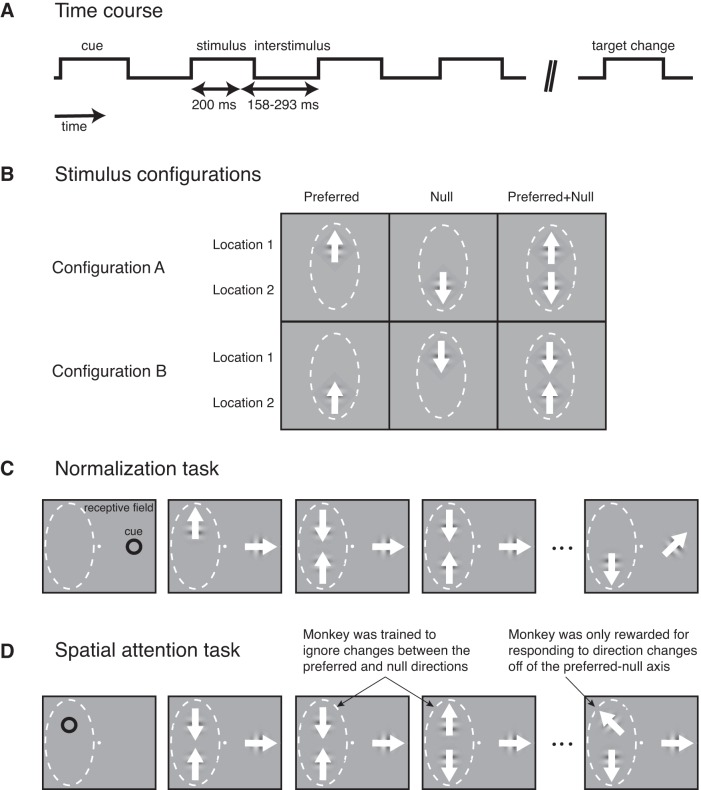Fig. 1.
Experimental paradigm used to measure normalization and attention modulations of neuronal driven response rates in 2 stimulus configurations. A: time course of a single trial in the change-detection task. A trial began with a spatial cue to 1 of 3 locations on a monitor, followed by brief stimulus presentations separated by blank interstimulus periods of random duration, until the target change appeared. B: stimulus configurations. The RF stimuli were pseudorandomly presented in 1 of 6 possible stimulus conditions per stimulus presentation. Three stimulus conditions were in configuration A (the preferred stimulus in location 1, the null stimulus in location 2), and 3 stimulus conditions were in configuration B (the null stimulus in location 1, the preferred stimulus in location 2). C: task used to measure normalization effects. Attention was cued to the location outside of the RF. D: task used to measure spatial attention effects. Attention was cued to one RF location in some blocks of trials and to the second RF location in other blocks of trials.

